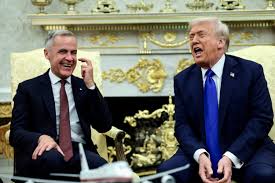
Introduction
The economic philosophies of figures like Mark Carney, the former Governor of the Bank of England, and Donald Trump, the 45th President of the United States, serve as pivotal talking points in discussions on global finance and monetary policy. As the world continues to grapple with inflation, post-pandemic recovery, and geopolitical tensions, understanding their contrasting viewpoints becomes increasingly significant.
Mark Carney’s Approach to Economics
Mark Carney has been recognized for his pragmatic and cautious approach to banking and finance. Serving as the Bank of Canada’s governor from 2008 to 2013 and later the Bank of England’s head, Carney has consistently emphasized the need for robust regulatory frameworks to mitigate economic risks. In recent discussions, Carney has highlighted climate change as a major risk to global stability and has advocated for sustainable finance as a critical element for future economic policies. His views advocate for collective action and responsibility, reflecting a belief that the market does not operate in isolation.
Donald Trump’s Economic Philosophy
In contrast, Donald Trump’s economic policies were characterized by deregulation and a strong focus on nationalism during his presidency from 2017 to 2021. Trump’s administration prioritized tax cuts, immigration reform, and trade policies aimed at reducing the U.S. trade deficit. His ‘America First’ doctrine led to significant economic changes, including a contentious relationship with various international trade partners. Despite criticisms regarding the sustainability of his economic reforms, Trump’s approach gained support among many who viewed it as a necessary push against globalization.
Key Differences in Their Strategies
One of the primary differences between Carney and Trump lies in their perspectives on the role of government and regulation in the economy. Carney supports more regulatory oversight to protect economic stability, especially in times of crisis, whereas Trump’s policies focused on reducing regulations to spur innovation and growth by allowing businesses more freedom. Furthermore, Carney’s advocacy for addressing climate change contrasts sharply with Trump’s withdrawal from international climate agreements, indicating a significant ideological divide regarding the future of economic governance.
Conclusion
As global economies continue to navigate through turbulent waters influenced by pandemic recovery efforts, inflation, and environmental challenges, evaluating the contrasting economic philosophies of Mark Carney and Donald Trump offers insightful perspectives. For policymakers, understanding these differences is crucial for crafting strategies that address contemporary economic issues. Going forward, watching how their ideas continue to resonate with or contradict each other will be significant for global economic discourse.



